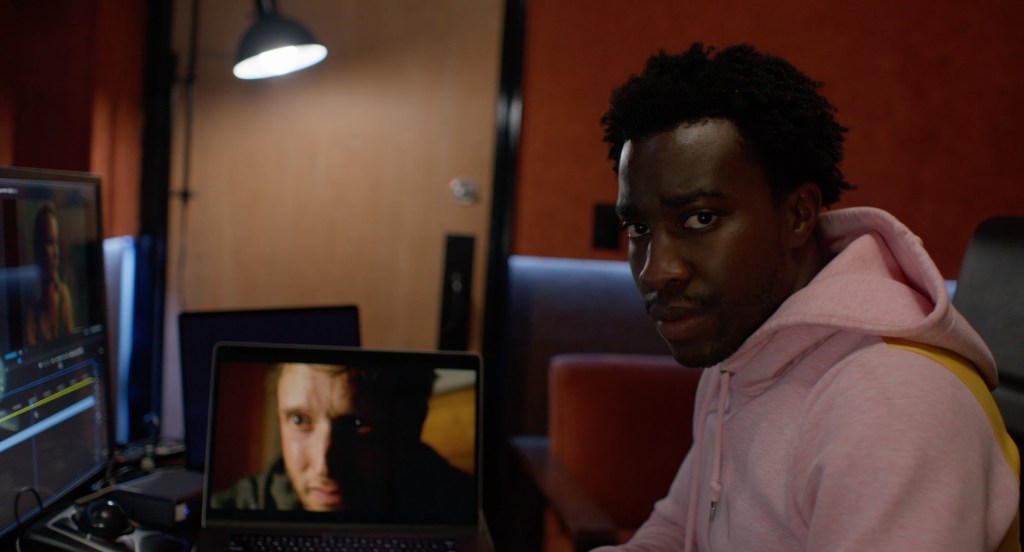The discovery of mysterious recordings that hold a malevolent sentience destroys lives in multiple time periods in Justin Janowitz’s layered found footage movie Do No Watch.
The narrative ambition for this found footage movie is admirable. It’s essentially three sets of found footage in one, each from a different timeline, but all infected with some dark presence eager to escape its confines by spreading beyond these digital documents.
At the base of it is footage of three people looking for a mysterious underground vault. In the second timeline, is being edited by a small company looking to make a low-budget horror hit. In the timeline that wraps it all together, we follow two people investigating what happened to the team that edited the footage and, ultimately, what happened to that footage.
Thematically, this layer cake of found footage is spot on. The concept of spreading something viral through media that has dark intentions is a perfectly apt one for our past decade of social media, ”content” creation, and punditry. Like all horrific real-life nonsense, it makes for a splendid horror movie. Movies such as Pontypool and games like the Metal Gear Solid series (specifically MGS 2 and MGS V) are great progenitors of the viral nature of words in entertainment that fit a previous era. Do Not Watch is the natural successor to this, albeit in a less barbed, satirical manner than that.
There is a meta aspect to it, though. The malevolent force in question seeps through every layer of the footage we see. Bubbling up into the viewer’s own fourth layer via flashing messages and other visual aberrations clearly not meant to be in the other layers.

It’s a lot for the film to carry, and it’s admirable that Janowitz manages to juggle them as well as he does. A nice side effect of this is that even when it threatens to unravel, it feels like part of the makeup of the film.
Where everything rests is in the payoff. In keeping with the film’s mood of obsessive mania, each resolution is held off despite tease after tease of the next scene being the key one. Does Janowitz perhaps push that a bit too far for the outcomes we get? Yes, the straight payoff of each story is not quite as explosive and dread-inducing as it could be. Where Do Not Watch does deliver is in the underlying idea of an entity spreading through video. The result is technically less interesting and important than the implication. A cursed video that can transfer itself to other footage. Growing obsession and despair with a feeling and a frustrating lack of answers. A feeling that compels its viewers to keep looking for them.
The elusiveness of Do Not Watch does mean that it doesn’t do itself many favors in rewarding patience and delivering instant gratification. The delivery method is inventive and ambitious, but cracks can be found in such an approach.
Still, I’m all for a movie that dares to be divisive without doing it as a gimmick. The constant cutaways from resolution can be understandably irritating in a traditional structure. But it’s clearly part of Do Not Watch’s D.N.A. to be that way.
If I had to pick an aspect that didn’t work for me, then it’s actually in how the visual ”spread” is represented in the finale. It felt like a compromise for those who might be frustrated with the film’s payoff. It’s not a disaster, but it did take a bit of the oppressive edge off for me.
Do Not Watch does some cool things with the found footage model. That means it also sacrifices a bit of audience accessibility in the process. For me, that made it all the more interesting, but I can see this rubbing some people the wrong way.
SCORE: 7/10
As ComingSoon’s review policy explains, a score of 7 equates to “Good.” A successful piece of entertainment that is worth checking out, but it may not appeal to everyone.
Do Not Watch screened as part of the Unnamed Footage Festival.










